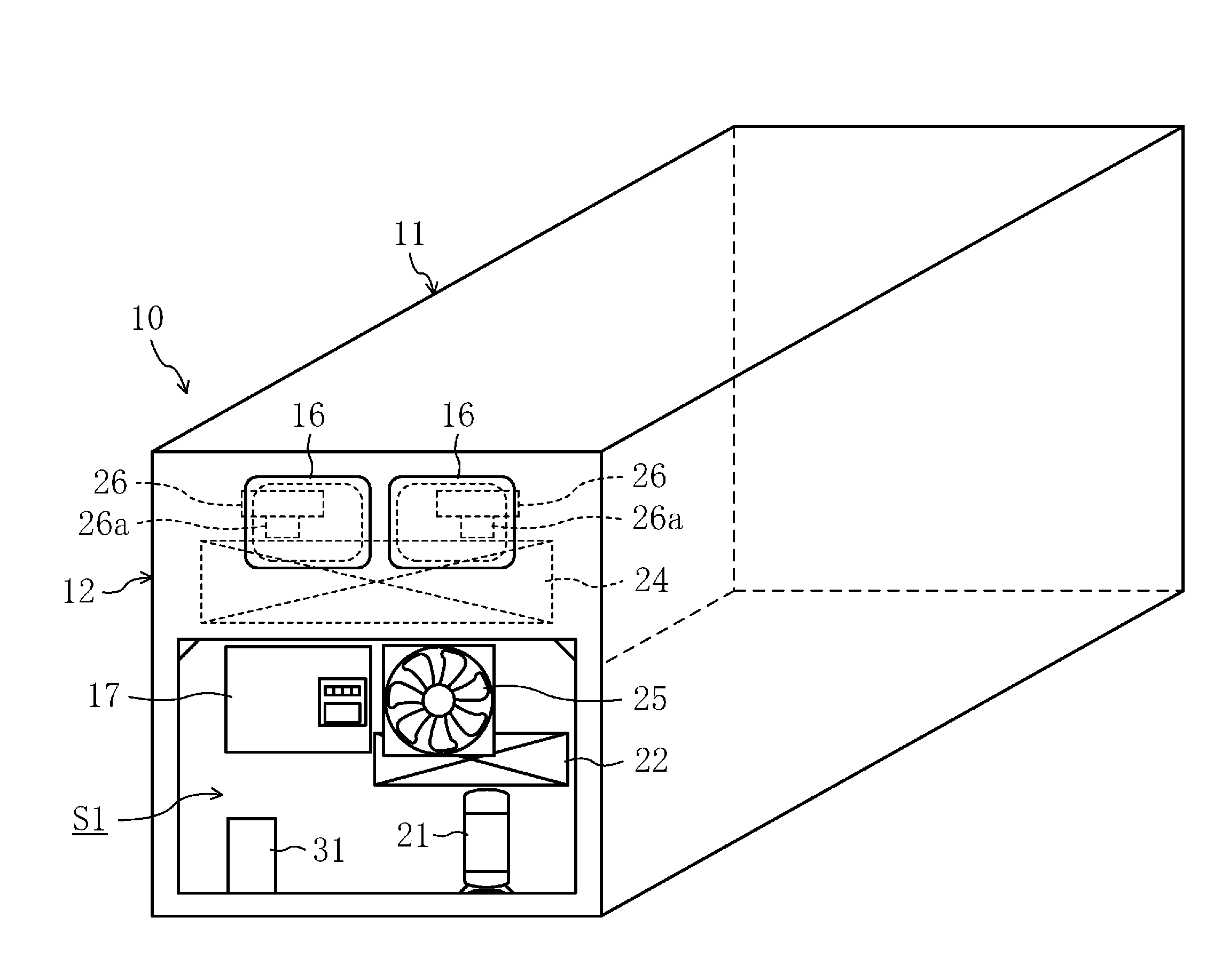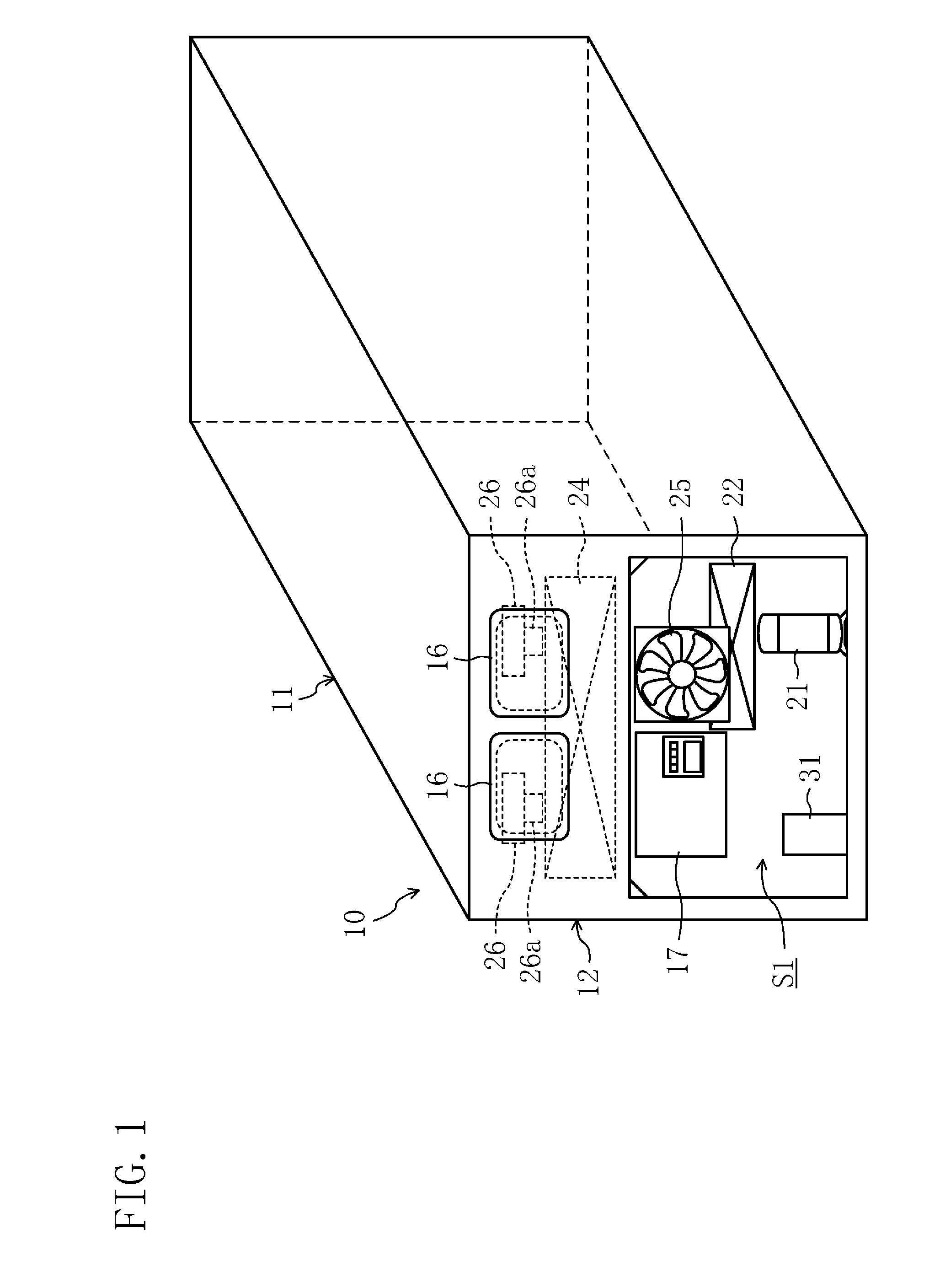Refrigeration unit for container
a container and refrigeration unit technology, applied in the field of refrigeration units, can solve the problems of reduced freshness, deterioration, and plant coloration, and achieve the effect of reducing the magnitude of variation in oxygen concentration
- Summary
- Abstract
- Description
- Claims
- Application Information
AI Technical Summary
Benefits of technology
Problems solved by technology
Method used
Image
Examples
first embodiment
[0045]As illustrated in FIGS. 1 and 2, a container refrigeration apparatus (10) performs refrigeration and freezing on the stuff stored in the interior of a container (11) for use in e.g., marine transportation. The container refrigeration apparatus (10) includes a refrigerant circuit (20) which performs a refrigeration cycle to cool air in the interior of the container (11) (see FIG. 3). In the interior of the container (11), boxed plants (15) are stored. The plants (15) perform respiration by absorbing oxygen (O2) in the air and releasing carbon dioxide (CO2) into the air, and examples of such plants (15) include fruit like bananas and avocados, vegetables, cereals, bulbous plants, and natural flowers.
[0046]The container (11) is formed in the shape of a box with one open lateral end, and a casing (12) of the container refrigeration apparatus (10) is attached so as to close the one open end of the container (11). The casing (12) includes an exterior wall (12a) disposed outside the ...
second embodiment
[0110]FIG. 10 is a side cross-sectional view illustrating a configuration of a container refrigeration apparatus according to a second embodiment. In the following description, like reference characters will be used to denote the same elements as those of the first embodiment, and only their difference will be described.
[0111]As illustrated in FIG. 10, the container refrigeration apparatus (10) includes an inert gas supply device (55) supplying the interior of the container (11) with an inert gas. The inert gas is a gas used to reduce the oxygen concentration in the container (11) without causing an increase in the carbon dioxide concentration in the interior of the container (11), and may be nitrogen gas, for example.
[0112]The inert gas supply device (55) functioning as an inert gas supplier includes a nitrogen cylinder (56) filled with nitrogen gas, a nitrogen supply pipe (57) supplying the nitrogen gas of the nitrogen cylinder (56) to the interior of the container (11), and an on...
PUM
 Login to View More
Login to View More Abstract
Description
Claims
Application Information
 Login to View More
Login to View More - R&D
- Intellectual Property
- Life Sciences
- Materials
- Tech Scout
- Unparalleled Data Quality
- Higher Quality Content
- 60% Fewer Hallucinations
Browse by: Latest US Patents, China's latest patents, Technical Efficacy Thesaurus, Application Domain, Technology Topic, Popular Technical Reports.
© 2025 PatSnap. All rights reserved.Legal|Privacy policy|Modern Slavery Act Transparency Statement|Sitemap|About US| Contact US: help@patsnap.com



